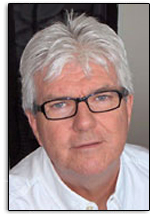Considering that a lot of suburban living requires car ownership and induces considerable solo driving, it is not surprising that only nine percent of households in the U.S. owned no automobile in 2007. During that year, a full 76.0 percent of U.S. workers drove alone to work, and 10.4 percent car pooled while only 4.9 percent took public transit. Approximately 4.1 percent worked at home, only 2.8 percent walked, and 1.7 percent travelled by other' means, including cycling.
To feed this extensive habit, even more land has been consumed for roadways, parking lots, and garages than has been developed for housing - in fact, the two have compounded each other. It has been calculated by researchers at the Victoria Transport Policy Institute that in typical suburban areas, about three times as much land is dedicated to roadways and parking as to housing.
Opponents to the advocacy of more compact development object that traffic congestion rises and paving of the environment increases as a function of density. However, the underlying reality is that both depend very much upon transportation mode. Prior to the advent of the auto, urban densities equivalent to 31 to 63 persons per acre (76 to 156 persons per hectare) could be quite pleasantly accommodated.1 Indeed, most of the world's towns and cities were within this range. The scenario now differs markedly when cars are included, as each medium-sized' car commands about twenty-five times the space of a human being, and in motion requires even larger expanses. In short, the higher the speed, the greater the space. And when not in motion, which is 95 percent of the time, a parking space is needed at both the origin and destination of every trip.
To meet the traditional guidelines of the lending institutions that finance development, we typically provide, when we build, not one, but two or three parking places per car - one at home, one at work or school, one at the shopping centre, entertainment, or vacation spot, etc. This is true whether we are building in rural areas, in suburbs, or in cities, with the exception of only a few cities that are served by regular, around-the-clock public transit systems. When access drives are included, at least 300 to 350 square feet (28 to 32.5 square metres) are allocated for each off-street parking space. So we are dedicating 600 to 1050 square feet (55.7 to 97.5 square metres) to each private car for the purpose of its storage alone, even before streets and highways are counted.
Highways - which were intended to solve congestion, but have typically induced more of the very traffic they were built to relieve - are similarly land consuming. The space required on a highway for the safety of each moving car - some one thousand square feet (93 square metres) at least - exceeds by a factor of fifty the space occupied by a public transit rider. It also exceeds by a factor of more than one hundred the space a pedestrian needs. Even high-occupancy vehicles,' when carrying four persons per car, have been found to be far more space consuming than a quarter-full bus, especially when consideration is given to the parking space required at the destination.2
The scale of development is grossly inflated, and a largely paved environment and traffic congestion are virtually guaranteed as densities rise. The resulting loss of green space, and the severe economic penalties that these spatial requirements impose on compact development, have persistently helped to drive the impetus of development toward outlying areas, acting as a geographically divisive force to magnify all other decentralizing factors - be they poor city schools, crime in the cities, racial divisions, real estate speculation, competitive inducements among outlying municipalities to attract new commercial development, or simply the relatively looser regulation of development in outlying areas.3
This paving is happening slowly enough that the average person notices only a small part of the picture. However, once virgin land is taken for development, reversing the process is generally impossible. It is also the choicest farmland, forest and scenic lands that are built upon since those very qualities that make them desirable for one purpose, such as fertility, good drainage, natural beauty, and proximity to urban centres, make them similarly desirable for the other. An easily discernible negative result is the loss of fertile farmland close to urban areas; another is the destruction of the habitats of wildlife.
As woods and grasslands are carved up into housing developments, malls and highways, the whole complex fabric of the natural world has been gradually unravelling, leaving only isolated pockets of nature preserves,' and rendering untold numbers of plant and animal species vulnerable to extinction. Largely because of loss of habitat, animal species worldwide are becoming extinct at a rate at least one hundred times their normal replacement levels. What was once a vast continuum of interrelated natural landscapes is being fragmented into isolated islands so small that they are unable to sustain viable populations of many flora and fauna.4
Not commonly appreciated are the massive losses of invertebrate life that occur as natural areas are degraded. These need to be recognized as catastrophic loses, for it is this myriad of tiny invertebrate creatures that serve as the basis of every ecosystem, decomposing wastes, and maintaining soil structure, pollination, and fertility upon which plant growth and thus all higher organisms depend.
When new towns are located in outlying areas on the assumption of dependency upon private cars for mobility, which is our typical planning assumption, they are simply exporting these ecological problems to the countryside. The net impact is the same.
With more than two-thirds of the country's population living in urban areas, much higher levels of federal commitment to metro-wide, intercity, and inter provincial systems of public transport are vital. But for this to happen, what is first needed is a consensus and commitment among a sizable portion of the public that construction of transit and, in particular, the compact development that it will engender are indeed worthy goals for society particularly stimulating green spaces.
1 Pushkarev and Zupan. Public Transportation and Land Use Policy. 4-7
2 Eric C. Brun and Preston L. Schiller. "How Cars Devour Urban Space and Time," Urban Transport International 5 (May-June 1996): 38, 39
3 Warren, Roxanne, Editor. "Perceptions of Cities and Rail, and a Changing Paradigm," Rail and the City. Shrinking Our Carbon Footprint While Reimagining Urban Space (2014): 9-10
4 David Quammen. The Song of the Dodo: Island Biography in an Age of Extinctions (New York: Scribner, 1996), 602-625











